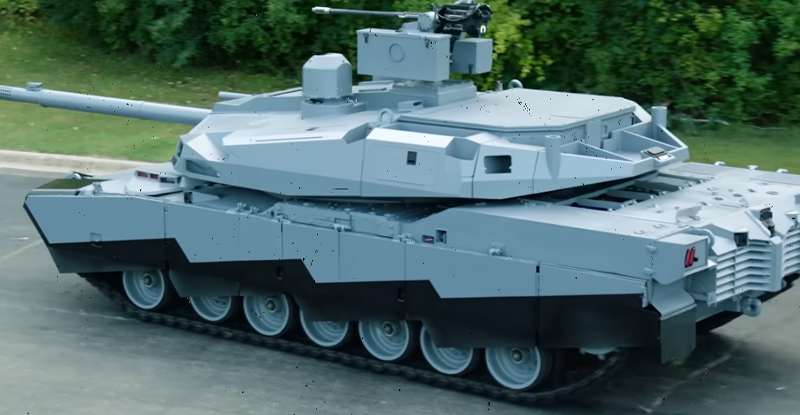By Stephen Byren | AsiaTimes
The Army is funding two competitors to build a new, lighter, Abrams tank, dubbed Abrams X.
The new tank will feature a hybrid electric drive and will permit a reduced crew size. It will have an auto-gun loader. . .
. . . According to the Army, Abrams X will be 50% more fuel efficient than the Abrams. This huge fuel efficiency is achieved thanks to dramatically reduced tank weight along with greater hybrid operating efficiency compared with the inefficient gas turbine power pack.
The argument for hybrid electric is that it would allow tank operations to sometimes be “silent” (running solely on battery power). In those circumstances the tank’s thermal signature would be far less, meaning that weapons that key on heat sources won’t be threats when the engine is off.
From an operational and logistical point of view it would seem that a hybrid electric tank has a significant advantage.
But there are drawbacks, too. One of them is the need for a large lithium battery pack. Battery packs are heavy and expensive and they also are dangerous because they can explode if hit by shrapnel or if a mine blows out the tank’s bottom.
While we don’t know the size of the battery the Army will opt for, it will have to be big enough to power a heavy tank – meaning the battery could weigh a few tons. This creates a vulnerability that does not exist today and raises questions on whether it makes sense to go in the hybrid direction.
In addition to exploding and burning batteries, an important question is field servicing. In warfare, engines under great stress can be damaged or burn out and need to be replaced. In a modern modular power pack, it is possible to replace the entire assembly in a few hours – even in the field.
There are a few reasons why exchanging engines and other power components on a hybrid tank could be near to impossible. While the engine itself can be lifted out, it will be fitted with high voltage cables and connectors that require the battery to be safely disconnected and capacitors discharged before the engine can be removed. How this will be done in the field is an open question.
Even more troublesome are the electric motors that power the tank. These will be on the tank’s underside, connected to the drive wheels. If the electric motors are damaged it is most likely the tank will have to be towed away, put on some kind of transit gurney and sent to a repair depot with equipment capable of lifting the tank so it can be serviced.
Electric motors on tanks will be heavily stressed, far more so than is the case with any conventional vehicle. No one today can say anything about the long term reliability of an electric drive motor that will need to start and jump off multiple times on the battlefield. While electric motors are famous for generating a lot of torque, moving 67 tons or more of tank on the battlefield will stress the moving parts of these engines as never before.
There are many ancillary questions as well. Electric motors are heavy and need to be mounted on assemblies that can hold the weight and deal with the torque from them. This means that the tank’s suspension will need considerable work to accept electric motor drives – and the drives themselves will add additional weight where you don’t want it, on the road wheels. How this will translate on soft ground or in rainy or snowy conditions is hard to say, but it can mean that the tank will dig itself in more easily than a conventional drive train. . . . (read more)
12 reasons why military going Electric with their vehicles is a bad idea
17 retired military officials raise alarm on Biden’s electric vehicle push
Communist China-linked Electric Batteries at US Military Bases









RE: Electric Tanks
In addition to all of the known negatives, another aspect left unidentified is the re-charging aspects, ie: what is the length of time needed to recharge the massive batteries, where will the electrical power come from for “battlefield” re-charging, what will be the vulnurability of a recharging tank under ongoing battle conditions, etc.
Just more of the idiocy of attempting to use electric vehicles in the “warfighting” military.
“